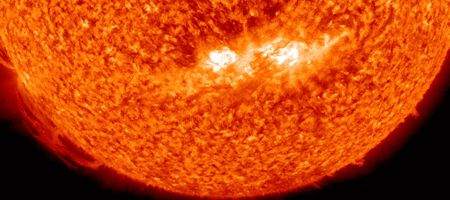NASA believes it’s found an explanation for the recent period of decreased solar activity during the sun’s 11-year cycle – the deepest solar minimum seen in almost 100 years.

Scientists were puzzled by the extended disappearance of sunspots in 2008-2009, which had implications for the safety of space travel.
During this period, far more cosmic rays were able to penetrate the solar system, risking the health of astronauts and even long-haul aircrew.
More surprisingly, perhaps, the deep solar minimum also affected the amount of orbital debris the Earth accumulated.
The decrease in ultraviolet radiation caused Earth’s upper atmosphere to cool and collapse; and the increased atmospheric drag meant that space debris stopped decaying and started accumulating in Earth orbit.
Now, according to NASA’s models, it seems that the disappearance of sunspots was caused by the combination of low solar activity and unusually weak magnetic fields.
“Plasma currents deep inside the sun interfered with the formation of sunspots and prolonged the solar minimum,” says Dibyendu Nandi of the Indian Institute of Science Education and Research in Kolkata.
NASA says that observations from the Solar Dynamics Observatory (SDO) will eventually provide measurements that could validate the current model and give much more accurate predictions in future.
“This research demonstrates how observations from Heliophysics System Observatory missions stimulate new theories and advance modeling techniques,” says Richard Fisher, director of the Heliophysics Division in NASA’s Science Mission Directorate.






